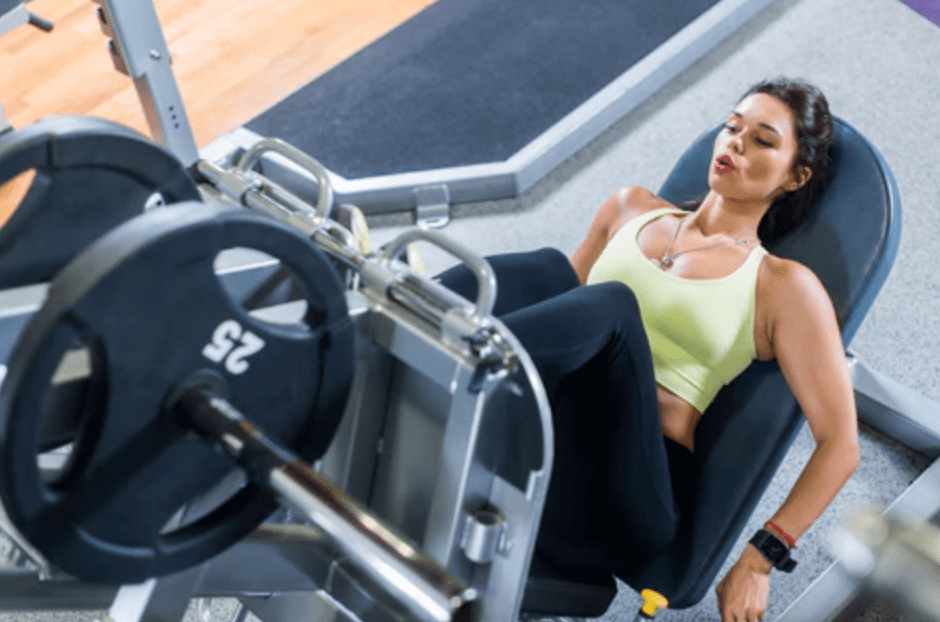While weightlifting is often considered synonymous with muscle building and achieving a large and solid physique, it’s not the only pathway.
Cleverly utilizing bodyweight exercises can be as effective as traditional benchmark movements like bench presses and squats, if not more so.
For the skeptics out there—I know you exist—just take a look at gymnasts. These athletes are some of the strongest individuals on Earth, and they don’t use dumbbells.
Contemporary fitness regimens offer a safe and efficient means of muscle development without the inclusion of external weights.
Gravity and Resistance
Muscle-building utilizes gravity rather than weight. Gravity creates resistance in our atmosphere, and this resistance can also be referred to as weight.

This is why the technical term for strength training is “resistance training.”
Weights are just tools used during resistance training. They are good tools that allow for various resistance exercises with ease and within limited space.
They also enable you to choose precise resistance levels, making them more versatile than relying solely on body weight and gravity.
However, they may come with certain limitations.
Bodyweight resistance training employs more natural movement patterns. It forces your body to move in ways that are beneficial for daily functions.
With a bit of creativity, you can achieve all the benefits of weight training and functional advantages while adding “lack of equipment” to your list of excuses.
Let’s delve into ways gravity can be your friend.
Push-ups: A Perfect Example
Let’s take a well-known exercise as an example: push-ups. Turn push-ups upside down, add a barbell with weight, and you have bench presses.
The moment you can bench press your own body weight, you have two very similar exercises—one requires lifting weights.
For many people, push-ups are entirely sufficient to build all the muscles they desire. It won’t be the same for everyone, but you can increase the intensity of push-ups by changing the position, removing one hand, and so on, mimicking the way you increase weight in bench presses.
Unless you’re in outer space, there are many bodyweight exercises that can provide resistance and muscle growth without additional weight.
Three Ways to Force Resistance in Bodyweight Exercises
To continue getting stronger, you need to progress over time. It’s easy with weights; just add more. In bodyweight training, it takes more thought and planning. Here are three ways you can force resistance, making your body continually adapt, which is the way to keep muscles growing:
Make the Movement Harder
The simplest way to increase resistance without weight is to find more challenging movements. If you’ve ever done the BODi program with pride in creativity and minimal equipment, you’ll see many variations like this.
From variations of push-ups and pull-ups to nearly all movements completed from a plank position—such as push-ups to side plank— the possibilities are endless.
By creating bodyweight exercises that make you fail due to stress at about the same rhythm (muscle contraction time), it’s not difficult to create a workout that provides the benefits of resistance training.
Reduce Stability
Reducing stability is another way to increase resistance without weight. This can be achieved by using unstable platforms like stability balls, or simply by exercising in positions where balance is challenged.
For example, lifting one leg or one arm in almost any movement makes it more challenging.
Emphasizing again, the goal of resistance training is the point of failure. If lifting one leg or one arm makes maintaining the position more challenging, that’s increasing strength.

Stability training loads more muscles across the body than most old-school isolation training does.
Critics might argue that it reduces the focus on the larger muscles you’re trying to make bigger. That’s true. But isolation training is also old-school.
Stability training offers better overall training effects on the body. Better training effects mean a more solid fitness foundation, allowing you to push yourself harder in other areas and reducing the risk of injury.
Engage in Jumping Training
Jumping training leverages gravity through aerial movements to maximize resistance. It’s one of the most effective tools for building absolute strength and changing body composition.
Commonly known as plyometric training, it’s essentially any dynamic movement—upper body, lower body, or core—that forces you to explode and then stay in the air for some time.
This process, by forcing eccentric muscle contractions, tells your body to activate high-threshold muscle fibers, far beyond what can be achieved in static weight training.
Jumping training forces your body to adapt quickly and intensely, enhancing strength and muscle building faster than traditional weight training.
Due to their intensity, the strategic use of this training style is crucial. When used correctly, combined with the methods mentioned above and proper recovery, it provides an unparalleled template for rapid muscle growth, with or without weights.
Limitations
Admittedly, there are limitations to muscle growth using bodyweight exercises alone. For the past 50 years, every bodybuilder has used weight at the very least to increase their muscle size.
If getting massive is your ultimate goal, then at some point, avoiding adding some iron to your plan will become limiting.
But if your goal isn’t as lofty as an Olympic gymnast’s, then a creative mind and honest gravity are enough to make your dreams come true.



+ There are no comments
Add yours